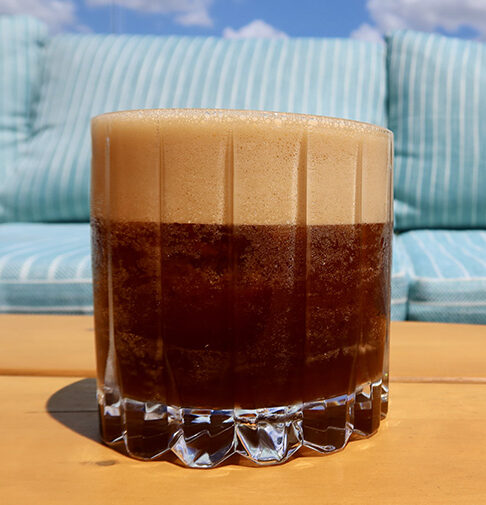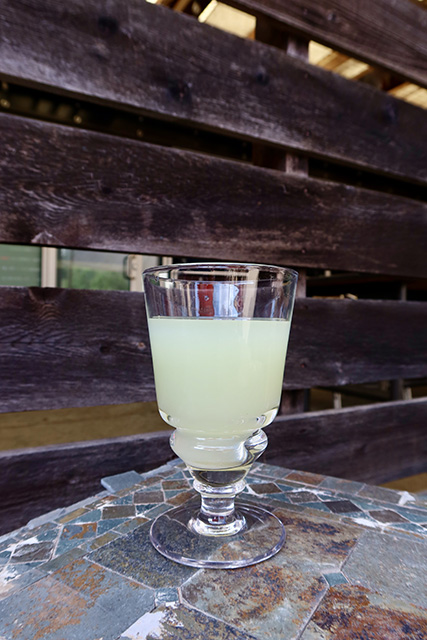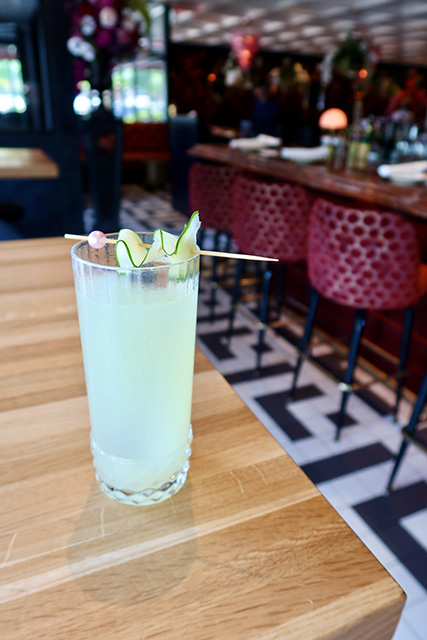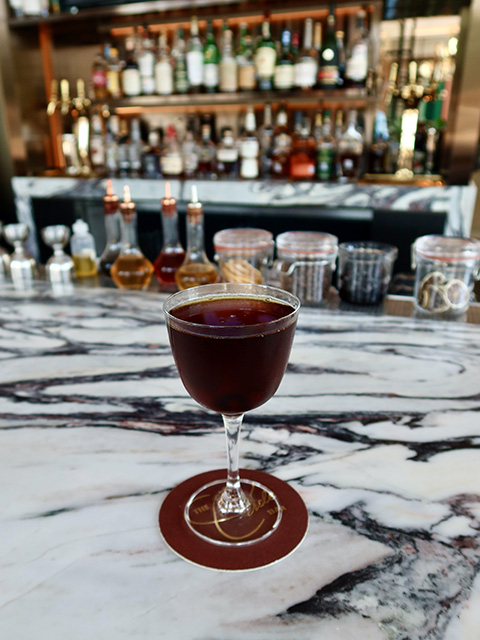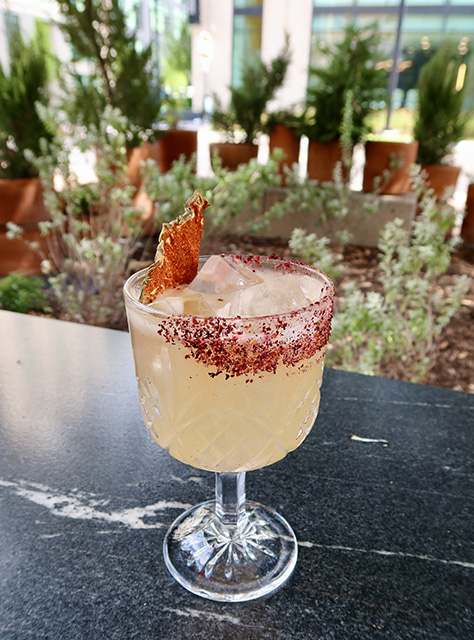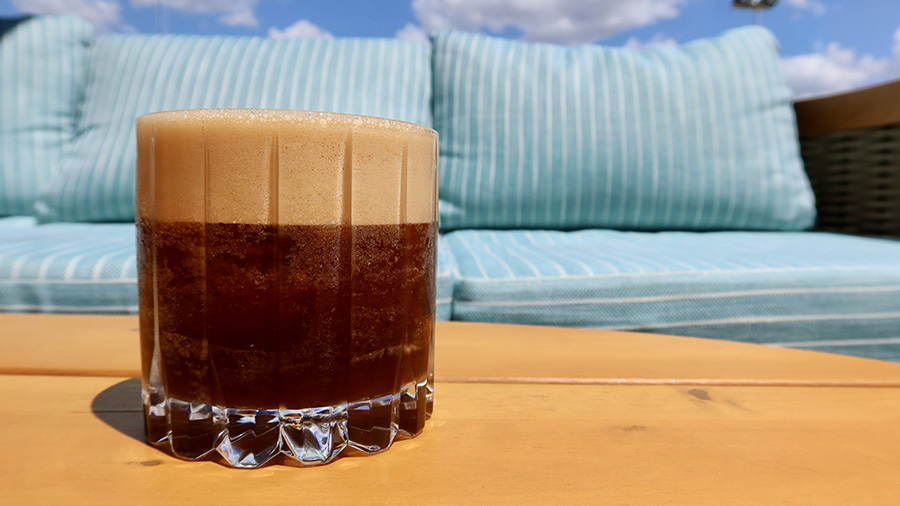
Spark your thirst for travel with cocktails that transform international spirits into cultural adventures. From dynamic distilled liquors to sultry liqueurs, these globe-trotting libations concocted by Fort Worth bartenders will make a mark on your palate if not passport — and may just inspire your wanderlust.
Sip your way around the world without leaving Fort Worth
Story and photography by Shilo Urban
Mexico: MEZCAL
Smooth and smoky, mezcal is made by roasting agave plants in underground pits and distilling the extracted juice (its name comes from the Aztec words for oven-cooked agave: metl ixcalli). Tequila is a variety of mezcal produced from a singular species, blue Weber agave. But mezcal can be crafted from dozens of different agaves, meaning that it’s more complex, more diverse and much more interesting. Almost all of it is produced in artisanal distilleries around Oaxaca, Mexico, including the Banhez mezcal joven at Don Artemio Mexican Heritage. Mild and fruity, it’s a perfect fit with the pineapple, tamarind and chipotle in their cocktail La Güera Rodríguez. If you want to branch out, Don Artemio carries more than 60 different mezcals you can explore.
Don Artemio La Güera Rodríguez
- Rim mix: Tajín, salt, dried and crushed hibiscus flowers
- 2 oz Banhez mezcal joven
- ½ oz fresh pineapple juice
- ½ oz fresh lime juice
- ½ oz tamarind chipotle syrup
- Dehydrated pineapple slice with chipotle powder
Preparation:
Moisten the rim of a chilled rocks glass, dip it into the rim mix and set aside.
Combine the first four ingredients in a cocktail shaker with ice and shake well. Pour through a cocktail strainer into your prepared glass; add ice and the dehydrated pineapple for garnish.
France: ST-GERMAIN
One thousand hand-picked blossoms go into each bottle of St-Germain Elderflower Liqueur, an enticing elixir with floral aromas and notes of pear, lychee and honeysuckle.
It’s named after the Parisian neighborhood of Saint-Germain-des-Prés, long famous for its creative effervescence of artists, writers and café culture. Just like artists, elderflowers can be quite temperamental; they can only be harvested for two weeks in June and are transported via bicycle to avoid bruising their delicate petals. St-Germain pairs beautifully with gin, as in Le Margot’s Napoleon Complex — a refreshing warm-weather cocktail with vivid citrus and cucumber.
Le Margot Napoleon Complex
- 2 oz Citadelle Gin de France
- 1 oz St-Germain
- 1 oz fresh lime juice
- ¼ oz simple syrup
- 1 oz cucumber water (substitution: muddle 4-5 slices cucumber)
- Cucumber ribbon
Preparation:
Combine the first five ingredients in a cocktail shaker, add ice and shake vigorously for 30 seconds. Pour through a cocktail strainer into a Collins glass filled with ice.
Garnish with cucumber ribbon.
Italy: AMARO
The country that created la dolce vita has no shortage of spirits to savor, from sambuca and amaretto to grappa and limoncello. But none is more pervasive than amaro, a bittersweet botanical liqueur whose origins go back 2,000 years. Amaro’s flavors vary widely; it can be infused with herbs, flowers, spices, citrus peel, aromatic bark or roots.
There are hundreds of varieties to choose from, and if you’ve ever sipped Campari, Aperol or fernet — you’ve already tried it. The bartenders at The Crescent Hotel, Fort Worth’s Circle Bar use Sicilian Amaro Averna in their black Manhattan, a dark twist on the spirit-forward cocktail and a delightful digestif after a meal at Emilia’s or The Blue Room.
Circle Bar Black Manhattan
- 2 oz Woodford Reserve rye
- 1 oz Amaro Averna Siciliano
- 2-4 dashes Angostura bitters
- 1 Tempus Fugit cocktail cherry
Preparation:
Combine the liquids in a mixing glass with ice and stir for 30 seconds. Pour through a cocktail strainer into a chilled Nick & Nora glass.
Add cherry for garnish.
Switzerland: ABSINTHE
Known as la fée verte (the green fairy), this anise-flavored spirit was invented in Switzerland in 1792 — and soon banned for the supposed psychoactive nature of its signature ingredient, wormwood. The prohibition only heightened the liquor’s enigmatic allure with the bohemian crowd; Picasso, Hemingway, Van Gogh, Poe, Degas and Toulouse-Lautrec were all frequent imbibers. Science has since debunked the myth of absinthe’s mind-altering properties, and Switzerland lifted its ban in 2005. Today, you can sample five types of absinthe at Proper Bar on West Magnolia Avenue. Tempus Fugit’s Duplais Verte is the most authentic to the 1800s. It’s crafted in Switzerland with pharmaceutical-grade wormwood and water from the Alps. Go old-school with an absinthe drip cocktail, which uses a traditional absinthe fountain to dribble water into the liquor. This releases the absinthe’s essential oils and transforms it into a milky green color, an opaqueness known as the louche. Be sure to check out the wormwood plant growing just outside the back entrance.
Proper Absinthe Drip
- 1.5 oz Duplais Swiss Absinthe Verte
- 1 sugar cube
- 5-8 oz ice water
Preparation:
Pour the liquor into an absinthe glass, then place a sugar cube on a slotted spoon and balance it on the rim. Slowly drip ice-cold water onto the cube and into the glass until the sugar dissolves and the cocktail reaches your desired strength.
Spain: LICOR 43
With an easy golden glow, vanilla-citrus flavors and undertones of spice, this lustrous liqueur features 43 secret ingredients. Created in 1946, the recipe was inspired by the ancient Liqvor Mirabilis (marvelous liquid) that Roman soldiers encountered during their conquest of Hispania. Today it’s the most popular liqueur in Spain and only five ingredients have ever been revealed — vanilla, orange, lemon, coriander and tea.
Whatever Licor 43 is made with, one thing is known far and wide: It pairs with coffee like a dream. Canary Islanders drink Licor 43 in a barraquito, a layered espresso drink with condensed milk and cinnamon. Here in Fort Worth you can try it at Quince in a carajillo, the Mexican version of an espresso martini. They also serve a frozen carajillo that’s ideal for a sunny afternoon on their riverside patio.
Quince Carajillo
- 2 oz fresh espresso
- 1.5 oz Licor 43
Preparation:
Combine ingredients in a cocktail shaker with ice and shake vigorously for 30 seconds to produce a thick, luscious head. Pour through a cocktail strainer into a chilled rocks glass with ice.
Travel even farther with these global spirits.
Bolivia: SINGANI
Made with grapes grown a mile above sea level in Bolivia’s high-altitude valleys, this colorless wine brandy has a distinctive floral flavor. Ask for it in a cocktail with grapefruit, hibiscus and ancho liqueur at Atlas.
Korea: SOJU
Don’t pour your own glass of soju — it’s bad luck. Instead, ask the bartenders at Wabi House to pour you some of this rice-based spirit that’s crisp and neutral with just a touch of sweetness.
Brazil: CACHAÇA
Fresh-pressed sugarcane juice is the source of this subtly sweet liquor and its round, vegetal flavor. Cachaça is the essential ingredient in a caipirinha, Brazil’s national drink and a palate-rousing choice at Toro Toro.
Scandinavia: AQUAVIT
Distilled from grain or potatoes, this potent concoction is infused with caraway and/or dill. It’s imbibed across the Nordic countries and at The Usual, which offers a cocktail with aquavit, ginger beer and lavender bitters.
Peru: PISCO
Pisco is herbaceous and fragrant, a clear grape brandy that pops up most often with tart lime juice in a pisco sour. Thompson’s Bookstore makes a mean one with a super-fluffy head.

